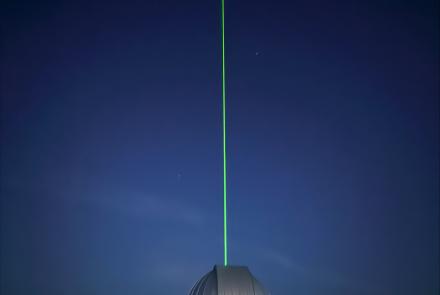
Kansas joins unmanned aircraft test range run by UAF
Kansas has joined the unmanned aircraft system testing range managed by the University of Alaska Fairbanks. Testing programs overseen by Kansas State University Polytechnic Campus are now part of the Pan-Pacific UAS Test Range Complex. “By adding partners, we’re strengthening our capability and the diversity of climates and geographic areas where we can test,” said Cathy Cahill, director of the Alaska Center for UAS Integration at UAF’s Geophysical Institute. The Kansas campus will enhance the Pan-Pacific range’s safety management, pilot training and control of manned-unmanned aircraft interactions, Cahill said. “We’re delighted that Kansas is joining us — in fact, we’re involved in one of our first projects already,” she said. ACUASI manages the Pan-Pacific complex, which includes Alaska, Hawaii, Oregon and Mississippi. The complex allows manufacturers and potential users to test their unmanned aircraft in seven different climates, including Iceland’s. Kansas State Polytechnic, which also has a strong manned aviation program, was one of the first universities in the U.S. to offer a bachelor’s degree in unmanned aircraft systems. The Kansas program benefits from connections to other organizations, such as the National Guard, local law enforcement and agricultural research institutions, said Kurt Barnhart, Kansas State Polytechnic’s associate dean of research and engagement. “We’re excited to be a part of it,” Barnhart said of the Pan-Pacific complex. “There is a lot of potential to develop together.” “One thing worth emphasizing is we’ve got complementary levels of operational backgrounds,” said Kurt Carraway, UAS executive director of Kansas State Polytechnic’s Applied Aviation Research Center. “From a safety-centric perspective, there’s a lot of commonalities in our approaches to our operations.” The Pan-Pacific complex, also called the Alaska Test Site, is one of seven authorized by the Federal Aviation Administration. The sites, all created since 2013, concentrate on different aspects of integrating unmanned aircraft into U.S. airspace. The Alaska Test Site focuses on developing standards for categories of unmanned aircraft, monitoring natural resources and events (such as wildfires and animal movements), and strengthening navigation (by, for example, mapping sea ice and whale migrations). “The FAA’s primary mission is aircraft safety…so when they are considering decisions of increasing access of unmanned aircraft systems into the airspace, there has to be good, quantifiable data to support those decisions,” Carraway said. “The data that’s being collected at these test sites does that.” The program was set for completion in 2016 but was extended by an FAA Reauthorization Act through 2019, with a possibility of re-extension through 2021, according to Cahill. “Although the program took a while to get up and going, the FAA is using the test sites more. We expect the program will be extended to the benefit of Alaska,” Cahill said.
Cathy Cahill, 907-455-2016, cfcahill@alaska.edu
Kurt Carraway, 785-826-7170, kcarraway@k-state.edu





